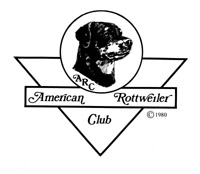Welcome to Our Comprehensive Rottweiler Health Guide
Ensuring the health and well-being of your Rottweiler begins with understanding the potential health conditions they may face and the importance of preventive screenings. Here at the American Rottweiler Club, we are dedicated to providing you with detailed information and guidance to keep your Rottweiler healthy and happy. Bookmark this page as new information will be added frequently and make sure you check out and share our insightful articles.
Common Health Conditions in Rottweilers
Rottweilers may be susceptible to a variety of health conditions. Below is an overview of the common issues identified in the breed, with available screenings noted to help you manage their health proactively.
| Health Condition | Available Screening Test |
| Cancers (various types including osteosarcoma, hemangiosarcoma, lymphoma) |
Yes (ONCOK9 or Nu.Q. Vet Cancer Test) |
| Hip Dysplasia (HD) | Yes |
| Elbow Dysplasia (ED) | Yes |
| Cataracts | Yes |
| Entropion | Yes |
| Ectropion | Yes |
| Epilepsy | No specific test |
| Sub Aortic Stenosis (SAS) | Yes |
| Protein Losing Enteropathy | No specific test |
| Juvenile Laryngeal Paralysis & Polyneuropathy (JLPP) |
Yes |
| Neuroaxonal Dystrophy (NAD) | Yes |
| Leukoencephalomyelopathy (LEMP) | Yes |
| Degenerative Myelopathy (DM) | Yes |
| X-linked Myotubular Myopathy (XLMTM) | Yes |
American Rottweiler Club Mandatory Health Screenings for Breeding Rottweilers
To promote the health of future generations, the following screenings are essential for any breeding pair, as required by the American Rottweiler Club Mandatory Practices:
| SCREENING | TEST DETAILS | REQUIRED RESULT |
|---|---|---|
| Hip Evaluation | OFA Radiographic Hip Evaluation after 24 months of age | Excellent, Fair, or Good rating |
| Elbow Evaluation | OFA Radiographic Elbow Evaluation after 24 months of age | Any rating
(Strongly recommended to breed only normal elbows to normal elbows or normal to Grade 1 DJD elbows) |
| Eye Evaluation | Eye Examination after 24 months of age by a Board-Certified Ophthalmologist. Re-examination and recertification required every three years and must be dated within 3 years prior to being bred. (If frozen semen is used, the re-examination and recertification must be within 3 years prior to the date of collection.) | Companion Animal Eye Registry (CAER) or Canine Eye Registry Foundation (CERF) number issued |
| Heart Evaluation | Cardiac Evaluation after 24 months of age (preferably by a Board-Certified Cardiologist and, preferably by echocardiogram) | Cardiac Normal (or Clear) rating |
| Juvenile Laryngeal Paralysis & Polyneuropathy (JLPP) | DNA test | All breedings MUST have at least one parent clear of carrying the DNA mutation.
A dog can be established as clear by: DNA test, recorded with OFA (example RO-LPP123/3F-PI); |
Additionally, acquiring a Canine Health Information Center (CHIC) number is required. This number is issued by the Orthopedic Foundation For Animals (OFA) once all parent club-required tests have been performed and the results are made public. It requires the Rottweiler to be permanently identified (via microchip or tattoo) at the time of testing.
For more details on the CHIC program, visit the Orthopedic Foundation For Animals.
Prioritize Your Rottweiler’s Health
By staying informed and proactive with the health of your Rottweiler, you can significantly increase their quality of life. We are here to assist you every step of the way with resources, advice, and the latest health screening options. Contact us to learn more about how you can keep your beloved dog thriving.
Evidence for the Use of CBD to Treat Canine Idiopathic Epilepsy
In the world of canine health, cannabidiol (CBD), a non-psychotropic [...]
Unveiling the Silent Threat: Detecting Osteosarcoma in Rottweilers and Beyond
Unveil the silent threat of osteosarcoma in Rottweilers and other large breeds. Explore how early detection can significantly improve survival rates and quality of life for affected dogs.
Understanding the Genetic Risks of Osteosarcoma in Rottweilers: Insights for Early Detection and Treatment
Discover the genetic factors behind osteosarcoma in Rottweilers. Learn about early detection, treatment advancements, and the broader implications for human cancer research.



